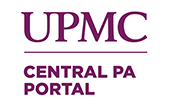UPMC's Division of Sleep Surgery offers a number of treatment options for obstructive sleep apnea (OSA). Treatments can include surgical and non-surgical options. The table below allows you to compare the benefits and side effects of these options.
Positive Airway Pressure (CPAP and BIPAP)
We provide hands-on education to customize the best and most appropriate equipment to each patient, including continuous positive airway pressure (CPAP) or bilevel positive airway pressure (BIPAP) machines. We offer close clinical follow-up with CPAP monitoring software to ensure proper treatment and optimize results.
Benefits
- Keeps the airway open with pressurized air
- Most effective therapy when used regularly, especially for severe OSA and obese patients
Possible Side Effects
- A number of mask-, pressure-, and equipment- related side effects may limit use
- Cumbersome for some to travel with
Oral Appliance Therapy
UPMC partners with specially qualified and experienced sleep dentists for the fabrication and fitting of the oral appliance. We provide close clinical follow-up and sleep testing afterward to ensure adequate OSA control.
Benefits
- Stabilizes the jaw forward at night and prevents airway collapse
- In certain patients, oral appliance can provide effective treatment
Possible Side Effects
- Some patients may experience bite changes, discomfort, or other dental side effects that limit use
Lifestyle Changes
We evaluate each patient’s sleep history and provide personalized recommendations on how specific lifestyle changes may help. UPMC also provides weight management and nutritional services including bariatric surgery.
Benefits
- Weight loss, smoking cessation, alcohol reduction, improved sleep habits
- Lifestyle changes can improve the effectiveness of all other treatments
Possible Side Effects
- No significant downside but data is limited on the effectiveness of these options in isolation
Positional Therapy
Using information for each patient's unique upper airway anatomy and sleep study findings, we provide recommendations for specific pillows or positioning.
Benefits
- Modifying the body position (e.g. side versus back) or the neck position with certain pillows may further improve the results of other treatments.
Possible Side Effects
- Minimal to-no risk but limited evidence on effectiveness as a sole treatment option
Treatment of Sinus and Nasal Problems
Sinus, allergy, and nasal problems can worsen OSA and may make it difficult to succeed with other treatments.
The UPMC Department of Otolaryngology offers renowned and comprehensive care of sinonasal problems including allergy testing, medical treatment, and nasal surgery.
Benefits
- Medical or surgical treatment to improve nasal breathing can be the key to success with CPAP and oral appliances in some patients
Possible Side Effects
- Treatment of the nose alone rarely provides complete control of OSA, but it can improve results with other treatments.
Upper Airway Reconstructive Surgery
Select patients, who have not succeeded with more conservative measures, may be candidates for procedures to alter the jaw or throat anatomy.
The Division of Sleep Surgery specializes in all upper airway reconstructive procedures. We provide comprehensive upper airway anatomy assessment with sleep endoscopy to customize an effective treatment plan to each individual.
Benefits
- Procedures can enlarge and stabilize the airway to provide treatment for OSA without needing a medical device
Possible Side Effects
- The potential benefits of the procedures must be weighed against the potential risks and recovery in each patient to determine whether surgery is appropriate.
Upper Airway Stimulation (UAS) Therapy
Dr. Ryan Soose at the Division of Sleep Surgery is a national leader in the research and clinical care for UAS therapy. He has authored many of the key research publications and has the largest clinical experience in the US.
Learn more about upper airway stimulation.
Benefits
- An implanted neurostimulation system syncs with the breathing patterns at night and provides gentle stimulation to key throat muscles to keep the airway open and improve airflow.
- Does not altar the normal anatomy and works with the natural breathing process to improve muscle tone
Possible Side Effects
- Patients with the UAS implant in place are not able to get an MRI. The UAS implant is compatible with all other imaging modalities.
In the News
New Device Can Reduce Sleep Apnea Episodes by 70 Percent, Pitt-UPMC Study Shows.
Make an Appointment at the Division of Sleep Surgery
To make an appointment with a sleep specialist at UPMC's Division of Sleep Surgery, call University Ear, Nose, and Throat Specialists at 412-232-3687 or submit a form online.


















